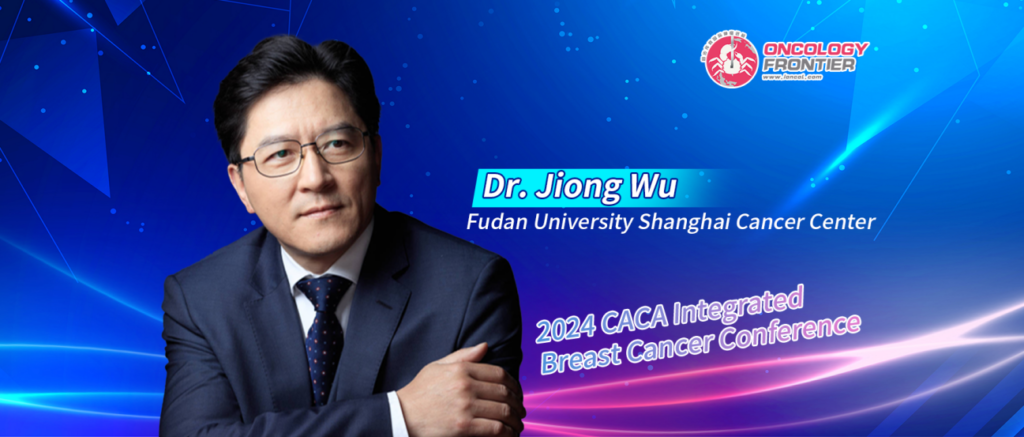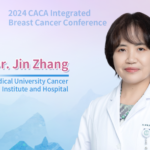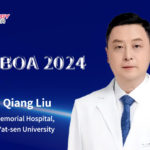
Editor's Note: On July 12-13, the 2024 CACA Integrated Breast Cancer Conference was held in Kunming, hosted by the Chinese Anti-Cancer Association (CACA) and the CACA Integrated Breast Cancer Committee, and organized by the China Academy of Integrated Medicine and Strategy Development, Yunnan Cancer Hospital, and ten professional committees. "Oncology Frontier" invited Dr. Jiong Wu, Chairman of the conference and from Fudan University Shanghai Cancer Center, to elaborate on the concept of "Winning in Integration for Tumor Prevention and Treatment." He discussed the challenges in breast cancer treatment under the integrated medicine philosophy and shared suggestions for better implementation of integrated breast cancer treatment in primary healthcare institutions.Dr. Jiong Wu: Winning in integration for tumor prevention and treatment, the 2024 CACA Integrated Breast Cancer Conference gathers new concepts, knowledge, and technologies to deeply analyze strategies for prevention, screening, diagnosis, treatment, and rehabilitation, aiming to combat breast cancer throughout its entire course.
At this conference, we integrated whole-course management strategies for breast cancer from popular science promotion, two-cancer screening, breast-conserving reconstruction, new drug development, to case management, aiming to help patients regain health and preserve beauty.
The 2024 CACA Integrated Breast Cancer Conference emphasizes multi-integration and collective intelligence!
01
Oncology Frontier: CACA always emphasizes the concept of “Winning in Integration for Tumor Prevention and Treatment.” Could you elaborate on the importance of this concept in breast cancer prevention and treatment?
Dr. Jiong Wu: Breast cancer is a highly representative malignant tumor that increasingly threatens women’s health in China. Every year, there are 350,000 to 400,000 new cases of breast cancer in China, accounting for nearly 20% of the global new cases, posing a significant disease burden. The challenges in China are not only the high incidence but also the low rate of early screening, low breast-conserving surgery rates, low rate of neoadjuvant therapy in locally advanced patients, and low completion rate of standardized follow-up. Consequently, although our 5-year survival rate is between 82% and 83% according to the National Cancer Center, there is still a gap compared to the 91% level in the most developed regions globally.
To narrow these gaps, we need to explore and implement new prevention and treatment strategies. Integrated breast cancer prevention and treatment is a crucial strategy. From the overall perspective of breast cancer prevention and treatment, we need to strengthen integration and cooperation throughout the entire process from prevention, screening, diagnosis, treatment to rehabilitation. For each patient, we hope to detect and diagnose the disease early, cure it with minimal treatment, and reduce the physical, mental, and economic burden on the patient.
For advanced-stage patients, we also hope for more integrated measures. Besides applying standard treatment regimens recommended in guidelines, we need to combine translational medicine research to discover relevant gene mutations in individual patients and design personalized medication plans to control the disease during progression. Therefore, the concept of integration runs through the entire process of breast cancer prevention and treatment.
Additionally, our understanding of integration should include a humanistic perspective, considering the needs of patients. Breast cancer patients, especially women, have specific needs in family, reproduction, and beauty. Since breast cancer can cause physical disfigurement and organ loss, we need to integrate plastic surgery methods to preserve or reconstruct the breast’s appearance. For women with fertility desires, we need to consider how to preserve their fertility during treatment so they can become mothers after completing treatment. Therefore, every aspect requires us to adhere to the concept of integration and work together to improve breast cancer prevention and treatment levels.
02
Oncology Frontier: You shared content about the “Integrated Guidelines for Breast Cancer” at the conference. What do you think are the main challenges in breast cancer treatment under the “integrated medicine” concept, and what future directions are worth exploring?
Dr. Jiong Wu: For breast cancer patients, the urgent treatment needs due to the disease may present dilemmas. Patients may urgently want to cure the tumor, while doctors may use multiple treatment methods to reduce the risk of recurrence. However, this might impose a heavy physical burden on the patients. For example, if we adopt an overly aggressive approach for breast cancer patients, many might feel self-conscious due to physical disfigurement and organ loss. If we perform extensive axillary dissection on patients who do not need it, combined with postoperative radiotherapy, it might increase their risk of upper limb lymphedema, affecting their quality of life long-term.
Therefore, under the concept of integrated medicine, we need to establish standardized multidisciplinary teams in medical institutions. By spreading scientific concepts, we help patients understand that breast cancer is a preventable, controllable, and treatable disease. We need to determine local treatment, surgery, and radiotherapy, and classified systemic drug treatment plans based on different types and stages, ensuring that patients are cured while maintaining good quality of life and mental state.
03
Oncology Frontier: What suggestions do you have for better implementing integrated breast cancer treatment in primary healthcare institutions?
Dr. Jiong Wu: Primary healthcare institutions play a very important role in the healthy lives of people. Many patients, when they first become ill, may go to primary healthcare institutions for initial diagnosis and evaluation, and then be referred to higher-level medical institutions. Some patients who receive standardized treatment in higher-level institutions may return to local healthcare institutions for long-term follow-up. Therefore, it is crucial for primary healthcare institutions to establish basic concepts and philosophies about tumors, including breast cancer.
Fudan University Shanghai Cancer Center and many national and provincial medical centers under CACA are actively promoting hierarchical diagnosis and treatment and the establishment of oncology specialist medical consortia. We hope that through these efforts, primary healthcare professionals and general practitioners can receive basic training and concepts on breast cancer prevention and treatment to better serve grassroots patients.
When patients visit primary healthcare institutions, medical staff should diagnose early through medical history inquiries and basic imaging examinations. Once diagnosed, they should promptly refer patients to higher-level institutions for standardized comprehensive breast cancer treatment. After treatment, most patients need long-term treatment and follow-up. For example, nearly 70% of breast cancer patients are hormone receptor-positive, requiring endocrine therapy for up to five or even ten years after surgery and radiotherapy. During this long treatment period, managing the side effects of medication requires active cooperation from primary healthcare institutions to improve patient adherence.
Therefore, after the release of the CACA “Integrated Guidelines for Breast Cancer,” it is necessary to promote the guidelines through roadshows in primary healthcare institutions, allowing more colleagues from these institutions to join the breast cancer prevention and treatment team.
Dr. Jiong Wu
- Executive Vice President of Fudan University Shanghai Cancer Center
- Chief Physician and Doctoral Supervisor
- Director of the Clinical Trial Center
- Executive Director of the Integrated Breast Cancer Committee, Chinese Anti-Cancer Association
- Ninth Chairman of the Breast Cancer Professional Committee, Chinese Anti-Cancer Association
- Deputy Chairman of the Breast Surgery Expert Committee, Surgical Physicians Branch, Chinese Medical Doctor Association
- Deputy Chairman of the Tumor Physician Branch, Chinese Medical Doctor Association
- Standing Committee Member of the Oncology Branch, Chinese Medical Association
- Incoming Chairman of the Oncology Branch, Shanghai Medical Association
- Honorary Director of the Breast Cancer Branch, Shanghai Anti-Cancer Association


